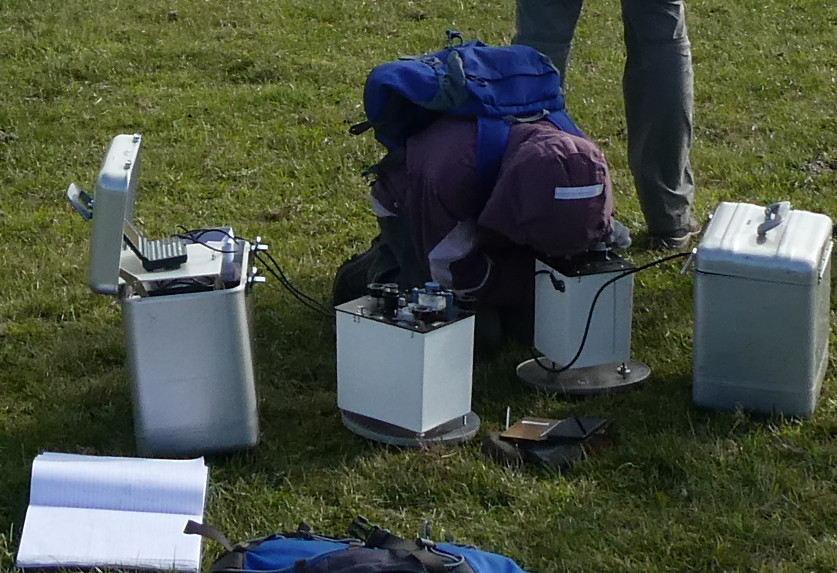The School of GeoSciences has four Lacoste and Romberg gravity meters. These instruments are one of the School’s “facilities”, meaning that they are a long-term equipment asset and that they can be made available on loan to users across the University, and from outside the University, who have a need to make some gravity measurements. Anyone wishing to use the instruments should contact Hugh.Pumphrey@ed.ac.uk in the first instance.
L and R gravity meters are usually referred to by their serial numbers. The original model G series have a calibrated range that covers the entire world. The model D series have a greater precision but are calibrated over a more limited range. The instruments we have are:
- G-275. This instrument was purchased in 1971 and is as it was when purchased, apart from routine servicing. It has a smaller case than usual and is very basic, with none of the optional extras.
- D-145. This instrument was purchased in 1989 and is as it was when purchased, apart from routine servicing. It has both a fine and a coarse dial, combining the merits of the original model G and model D instruments. It also has the optional beam galvanometer, analogue output and electronic levels.
- D-154. This instrument was purchased in 1989 and was at the time similar to D-145. It has since been upgraded by ZLS (https://zlscorp.com/) to add a high-precision electronic readout system.
- D-92 This is a single dial model D instrument. It has the optional beam galvanometer with analog output and the variable damping feature. I found it abandoned in the back of a cupboard and used it as a test case to ensure that a new power supply was not going to damage the working instruments. In the process I found that it does work, but not well. It is sometimes used to provide the live gravity tide plot when D-145 is not available. It is on my list to be serviced by ZLS.

There is further, more informal, information available about the instruments in Hugh Pumphrey’s blog, including the following posts:
- More information on the instruments
- Data from a recent field trip including a video demonstrating how the instruments are used.
- Detection of a nuclear test
- Baseplates
- An partly-solved mystery concerning the calibration tables for D-154